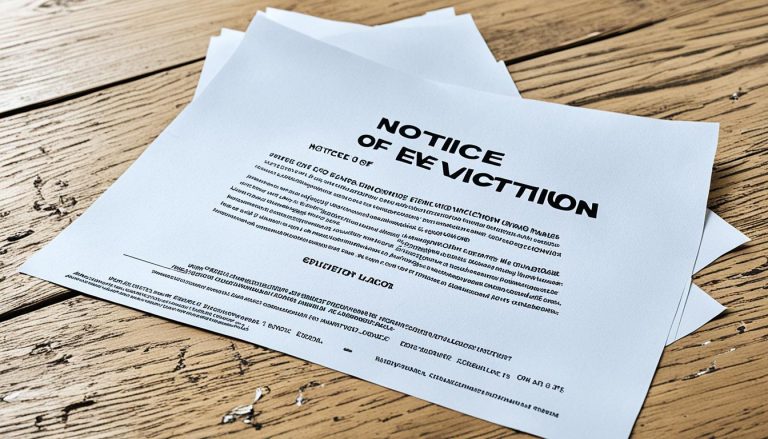In today’s fast-paced housing market, rent increases are a reality that both tenants and landlords must navigate. As property values fluctuate and the cost of living rises, the question of what constitutes a “fair” rent increase becomes increasingly important. For tenants, unexpected hikes can strain budgets, while landlords must balance the need to keep their properties profitable and well-maintained. But how do you determine what is fair?
In the UK, there are specific guidelines and legal frameworks in place to ensure that rent increases are both reasonable and justified. Understanding these regulations is key for tenants to protect their rights and for landlords to manage their properties responsibly. This article provides a comprehensive look into what is a fair rent increase UK, tenants’ rights, and best practices for landlords to implement fair rent adjustments.
Understanding Rent Increase Laws in the UK

The UK’s rental market operates within a strict legal framework that seeks to protect both parties in a tenancy agreement. When it comes to rent increases, these laws are governed primarily by the Housing Act and related legislation. The rules vary depending on the type of tenancy in place, which could be either a fixed-term or a periodic (rolling) tenancy.
Fixed-Term Tenancy
In a fixed-term tenancy, rent is set for the duration of the agreement, usually lasting six months to a year tenancy agreement. During this period, the landlord is not legally allowed to raise the rent unless a rent review clause is included in the tenancy agreement, or both the tenant and landlord mutually agree to a rent increase.
If a landlord wishes to raise the rent at the end of the fixed term, they must either renew the tenancy with the new rent terms or issue a notice to the tenant, proposing the changes before the renewal.
Periodic Tenancy
For a periodic tenancy, where the contract automatically renews on a weekly or monthly basis after the fixed term expires, rent increases are typically more flexible. However, even in these tenancies, landlords cannot increase the rent whenever they please. They must follow specific rules, such as giving the tenant proper notice and abiding by the statutory guidelines.
Section 13 Rent Increase
One of the most common legal mechanisms used by landlords to raise rent in periodic tenancies is the Section 13 rent increase. Under Section 13 of the Housing Act 1988, landlords can propose a rent increase once every 12 months after the fixed-term agreement has ended. This increase must be reasonable and reflective of market conditions.
Key points about Section 13 rent increases:
- The landlord must provide the tenant with a written notice, known as the Section 13 notice, which specifies the new rent and the date the increase will take effect.
- The tenant must receive at least one month’s notice if they pay rent weekly or monthly. For annual payments, six months’ notice is required.
- Tenants have the right to challenge the increase if they believe it is unfair by appealing to the First-tier Tribunal (Property Chamber), which can determine whether the proposed rent is reasonable based on local market rents.
What is a Fair Rent Increase UK?

Determining what constitutes a fair rent increase involves looking at various factors that influence the rental market. A fair rent increase should reflect current economic conditions, property value, and the landlord’s ability to maintain the property. Here are some key considerations:
1. Inflation and the Cost of Living
One of the most significant factors in rent increases is inflation. As the cost of living rises, so do the costs associated with maintaining and owning a rental property. A landlord might justify a rent increase based on rising maintenance costs, property taxes, or higher mortgage rates. However, any increase should not exceed inflation rates disproportionately and should be communicated transparently to the tenant.
2. Market Rent Comparison
A fair rent increase is one that aligns with the market rate. This means that the rent should be comparable to similar properties in the same area. If a property is located in a highly desirable area with rising demand, landlords may justify a higher rent increase. However, tenants can challenge the increase if it surpasses the market rate for comparable properties.
Landlords can reference platforms like Zoopla or Rightmove to determine the average rent for properties with similar features. Regional differences also play a role, as rents in London or other metropolitan areas tend to rise more sharply compared to smaller towns.
3. Property Condition and Upgrades
The state of the property can justify certain rent increases. If a landlord has made significant upgrades, such as modernising the kitchen, adding new appliances, or improving energy efficiency, they might raise the rent to reflect these enhancements. Conversely, if a property is in poor condition or has outstanding repair issues, tenants may have grounds to negotiate a lower increase or even defer the increase until the issues are addressed.
Average Rent Increase Percentages in the UK

While rent increases vary widely depending on location and market conditions, most fair rent increases in the UK tend to fall between 2% and 7% per year. However, this is not a legal limit, and in some areas, especially where demand outstrips supply, rent increases could be higher. Tenants should be aware of their right to challenge excessive increases.
Average Rent for New Tenancies in Q2 2024
As of Q2 2024, rental prices in the UK’s private rental sector (PRS) continued to rise significantly, with stark differences between regions and types of rental properties. When considering rent increases for new tenancies, it’s important to distinguish between single let tenancies and House in Multiple Occupation (HMO) rooms, as the rent dynamics differ substantially.
Average Rent Increase for Single Let Tenancies in Q2 2024
According to data from Rightmove, the average asking rent for new single let tenancies in the UK (excluding Greater London) saw a sharp increase of 7%, reaching £1,314 per calendar month (pcm) by June 2024. This rise outpaced CPI inflation, which stood at 2.0% during the same period, highlighting the ongoing pressure on tenants in the UK rental market.
In comparison to pre-pandemic figures from mid-2019, this represents an average increase of £391 per month from the previous £923 pcm, illustrating the significant financial burden on tenants over recent years.
The situation in Greater London remains more severe, with average rents hitting £2,661 pcm, marking a 4% year-on-year increase. However, this was a slowdown from the 12.1% annual increase seen in September 2023, suggesting that while rents are still rising, the pace is starting to moderate.
The demand for rental properties is still high, although it has dropped from pandemic peaks. In Q2 2024, the average number of enquiries for each rental property was 15, down from 26 in 2023, but still nearly double the 8 enquiries per property seen in Q2 2019.
Below is a regional breakdown of the average rent increases for single let tenancies across the UK, showing notable variations across different areas:
| Region/Country | Percentage Increase | Average Rent (per month) |
| London | 2.5% | £2,694 |
| South East | 3.5% | £1,869 |
| East of England | 4.9% | £1,625 |
| South West | 4.2% | £1,455 |
| East Midlands | 5.2% | £1,175 |
| West Midlands | 7.3% | £1,215 |
| Yorkshire & The Humber | 5.5% | £1,049 |
| North West | 6.8% | £1,180 |
| North East | 7.7% | £922 |
| Scotland | 6.3% | £1,108 |
| Wales | 5.2% | £1,086 |
| UK Average (ex London) | 9.2% | £1,280 |
The data underscores that while the average rent in Greater London remains the highest in the country, other regions are also experiencing significant increases, with the North East showing the sharpest rise of 7.7%. The average monthly rent across the UK, excluding London, now exceeds £1,280 pcm, indicating a general upward trend in rental costs.
Rent Increases for HMOs in 2024

For Houses in Multiple Occupation (HMOs), where tenants typically rent individual rooms rather than entire properties, the rate of rent increases in 2024 has been more moderate compared to single let properties. This is partly because HMOs cater to a different segment of the rental market, often attracting students and professionals looking for more affordable shared housing.
Average Rent Increase for HMOs in Q3 2024
According to data from SpareRoom, the average rent (including bills) for an HMO room in the UK outside of London reached £660 per month in Q3 2024, marking a 4% increase compared to the same period in 2023.
In London, however, the HMO market has shown signs of cooling. The average rent for an HMO room in the capital dipped slightly to £995 pcm in Q3 2024, down from £1,014 pcm in Q4 2023. The modest 1% increase in the 12 months leading up to Q3 2024 suggests that the surge in HMO rents in London may have plateaued, reflecting broader trends of stabilisation in the capital’s rental market.
Spareroom data also highlighted a decrease in rents across several London postcodes, further indicating that the HMO market in London is becoming less competitive. This is a marked difference from other parts of the UK, where rents continue to rise.
Below is a regional breakdown of average room rents in HMOs across the UK, showcasing how rent increases vary:
| Region/Country | Percentage Increase | Average Room Rent (per month) |
| East Anglia | 6% | £671 |
| East Midlands | 3% | £565 |
| North East | 4% | £550 |
| North West | 6% | £604 |
| South East | 4% | £741 |
| South West | 5% | £664 |
| West Midlands | 4% | £560 |
| Yorkshire & The Humber | 3% | £556 |
| London | 1% | £995 |
| Scotland | 4% | £716 |
| Wales | 6% | £578 |
| Northern Ireland | 8% | £573 |
| UK Average (ex London) | 5% | £653 |
The figures show that HMO rents outside London have generally risen at a steady pace, with Northern Ireland seeing the largest increase of 8%, followed by East Anglia at 6%. Despite London’s traditionally high rents, HMO rooms there experienced only a 1% increase, reflecting a cooling market.
Rent Increase Notices and Legal Requirements

When a landlord decides to raise the rent, they are legally obligated to follow a formal process that ensures the tenant has sufficient notice and the opportunity to dispute the increase if necessary. Failure to follow these rules can make the rent increase unenforceable.
Rent Increase Notice
A rent increase notice is a formal document that must be issued to the tenant, notifying them of the proposed new rent and the date from which it will apply. The notice must adhere to the terms laid out in the tenancy agreement or, in the case of periodic tenancies, comply with statutory guidelines such as Section 13.
What must be included in a rent increase notice:
- The new proposed rent amount.
- The date the increase will take effect.
- A clear explanation of the tenant’s right to challenge the increase, including details on how to appeal to the First-tier Tribunal if they disagree with the proposed rent.
Notice Periods
The required notice period depends on how frequently rent is paid:
- For monthly or weekly rent payments, tenants must receive at least one month’s notice before the new rent takes effect.
- For annual rent payments, a six-month notice is required.
If a landlord fails to provide the correct notice or does not use the proper legal channels (such as issuing a Section 13 notice in periodic tenancies), the tenant may not be required to pay the increased rent.
Tenant Rights and Responding to Rent Increases
Tenants in the UK are well protected by law when it comes to rent increases. As a tenant, understanding your rights can help you respond appropriately to a proposed increase.
Challenging a Rent Increase
If you believe a rent increase is unreasonable or does not reflect the market conditions, you can challenge it. The first step is often negotiating directly with your landlord. If a compromise cannot be reached, tenants can take their case to the First-tier Tribunal.
The tribunal will review evidence from both the tenant and landlord to determine whether the rent increase is fair. The tribunal’s decision is binding, which means both parties must adhere to the ruling.
The Fair Rent Tribunal
For tenants who believe a rent increase is excessive, the Fair Rent Tribunal (also known as the First-tier Tribunal) can play a critical role. The tribunal assesses whether the rent increase is fair based on the market rate for similar properties, the property’s condition, and any recent improvements.
To challenge a rent increase, the tenant must apply to the tribunal within the specified timeframe (usually before the increase takes effect). If the tribunal agrees with the tenant, it can set a new, lower rent. However, if the tribunal finds the increase to be justified, the tenant must accept the new rent or consider alternative housing options.
Landlord Responsibilities and Best Practices for Fair Rent Increases

For landlords, striking a balance between profitability and tenant retention is key. Implementing a fair rent increase while maintaining a good relationship with tenants can help avoid vacancies and disputes. Here are some best practices for landlords:
1. Setting Reasonable Rent Increases
Before proposing a rent increase, landlords should research the local market. What are other landlords charging for similar properties in the area? An increase should reflect the property’s value without alienating tenants or driving them to seek alternative accommodations.
2. Communicating Clearly and Transparently
When proposing a rent increase, transparency is essential. Landlords should clearly explain the reasons for the increase, whether due to rising maintenance costs, property improvements, or changes in market demand. Clear communication helps to build trust and reduces the likelihood of disputes.
3. Negotiating with Tenants
Long-term tenants are valuable, and retaining them can be more cost-effective than frequently dealing with vacancies. For this reason, landlords should be open to negotiating rent increases, particularly with tenants who have maintained the property well and paid rent on time. A small compromise can go a long way in maintaining a good tenant-landlord relationship.
Can a Tenant Refuse a Rent Increase?
Yes, tenants in the UK can refuse a rent increase, but they must follow the proper legal steps. Refusing an increase isn’t about ignoring the landlord’s notice—it involves understanding tenant rights and the legal procedures around rent adjustments.
1. Check the Legality of the Rent Increase Notice
Tenants should first ensure the increase follows legal requirements:
- Proper Notice Period: The landlord must give the required notice (usually one month for monthly rents or six months for annual payments).
- Correct Procedure: For periodic tenancies, the landlord must issue a Section 13 notice, informing tenants of the new rent.
If the landlord doesn’t follow these steps, the tenant can refuse the increase by pointing out the procedural error.
2. Negotiate with the Landlord
Often, tenants can avoid disputes by negotiating directly. They can propose a smaller or phased increase or provide evidence that the proposed rent is above the market rate. Highlighting good tenant behavior, such as timely payments, can also help.
3. Refuse a Section 13 Rent Increase
In periodic tenancies, tenants can formally challenge a rent increase by appealing to the First-tier Tribunal (Property Chamber). The tribunal assesses whether the increase is fair based on local market conditions, property condition, and other factors. If the tribunal rules in favor of the tenant, the rent increase may be reduced or canceled.
4. Legal Grounds to Refuse a Rent Increase
Tenants can challenge a rent increase if:
- The increase is excessive compared to market rates.
- The property is in poor condition, with unresolved maintenance issues.
- The landlord hasn’t provided proper notice or followed correct procedures.
5. What Happens if a Tenant Refuses a Rent Increase?
If a tenant refuses, several outcomes are possible:
- Negotiation: The landlord may agree to keep the rent as is.
- Tribunal Ruling: If the tenant appeals, the tribunal’s decision is legally binding.
- Eviction Notice: The landlord could issue a Section 21 notice (for England), giving the tenant two months to vacate, though this must follow legal guidelines.
6. Fixed-Term Tenancies
During a fixed-term tenancy, rent cannot usually be increased unless:
- The tenancy agreement includes a rent review clause.
- Both tenant and landlord agree to the increase voluntarily.
If these conditions aren’t met, tenants can refuse the increase until the contract ends.
How to Handle Rent Disputes?: Tenants vs. Landlords

Rent disputes can arise when tenants feel a proposed increase is unjustified or landlords believe tenants are not responding reasonably to the rising costs. There are several ways to handle tenant and landlord disputes:
1. Direct Negotiation
Many rent disputes can be resolved through direct negotiation between the landlord and tenant. Both parties should aim to understand each other’s perspectives and work towards a mutually agreeable solution. For example, a tenant might propose a phased rent increase or agree to a slightly lower rise than initially proposed.
2. Third-Party Mediation
If direct negotiation fails, mediation can be an effective way to resolve disputes without legal action. A neutral third party helps facilitate a discussion between the tenant and landlord, guiding them toward a fair compromise.
3. Taking the Case to the Tribunal
If all else fails, tenants can take their case to the First-tier Tribunal. The tribunal will assess whether the rent increase is fair and make a legally binding decision. While this process can be time-consuming, it is a critical recourse for tenants who believe a rent increase is excessive.
Table: Comparison of Rent Increase Processes for Fixed-Term vs. Periodic Tenancies
| Aspect | Fixed-Term Tenancy | Periodic Tenancy |
| Rent Increase Frequency | Can only be increased at renewal | Can be increased annually |
| Notice Period | Depends on agreement | Minimum 1 month (Section 13) |
| Legal Protections | Fixed by contract | Can challenge through Section 13 |
FAQs About Rent Increase in the UK
How much can rent be increased in the UK?
Rent increases are typically influenced by inflation, local market conditions, and property improvements. On average, rent increases in the UK range from 2-7% annually, though this can vary significantly depending on the region.
Can a landlord increase rent without notice?
No, landlords are required to provide proper written notice before increasing rent. The notice period depends on the payment frequency but is usually a minimum of one month for monthly tenancies.
What can a tenant do if they feel the rent increase is unfair?
Tenants can negotiate directly with the landlord or challenge the increase by applying to a First-tier Tribunal, which will assess whether the proposed rent is fair based on local market conditions.
What is Section 13 and how does it apply to rent increases?
Section 13 of the Housing Act 1988 allows landlords to propose rent increases once every 12 months in periodic tenancies. The landlord must provide the tenant with a Section 13 notice, and tenants can challenge the increase at the First-tier Tribunal.
Are there any limits to how much rent can increase annually?
While there are no specific legal limits on rent increases, landlords are expected to propose increases that reflect the market rate and inflation. Excessive rent increases can be challenged by tenants through the tribunal process.
Can landlords negotiate rent increases with tenants?
Yes, landlords and tenants can negotiate rent increases. Open communication and compromise can often lead to agreements that satisfy both parties and maintain a positive relationship.
What happens if a tenant refuses a rent increase?
If a tenant refuses the rent increase and no agreement can be reached, the landlord may issue a Section 13 notice. If the tenant still disputes the increase, the case may be taken to a tribunal for a binding decision.






